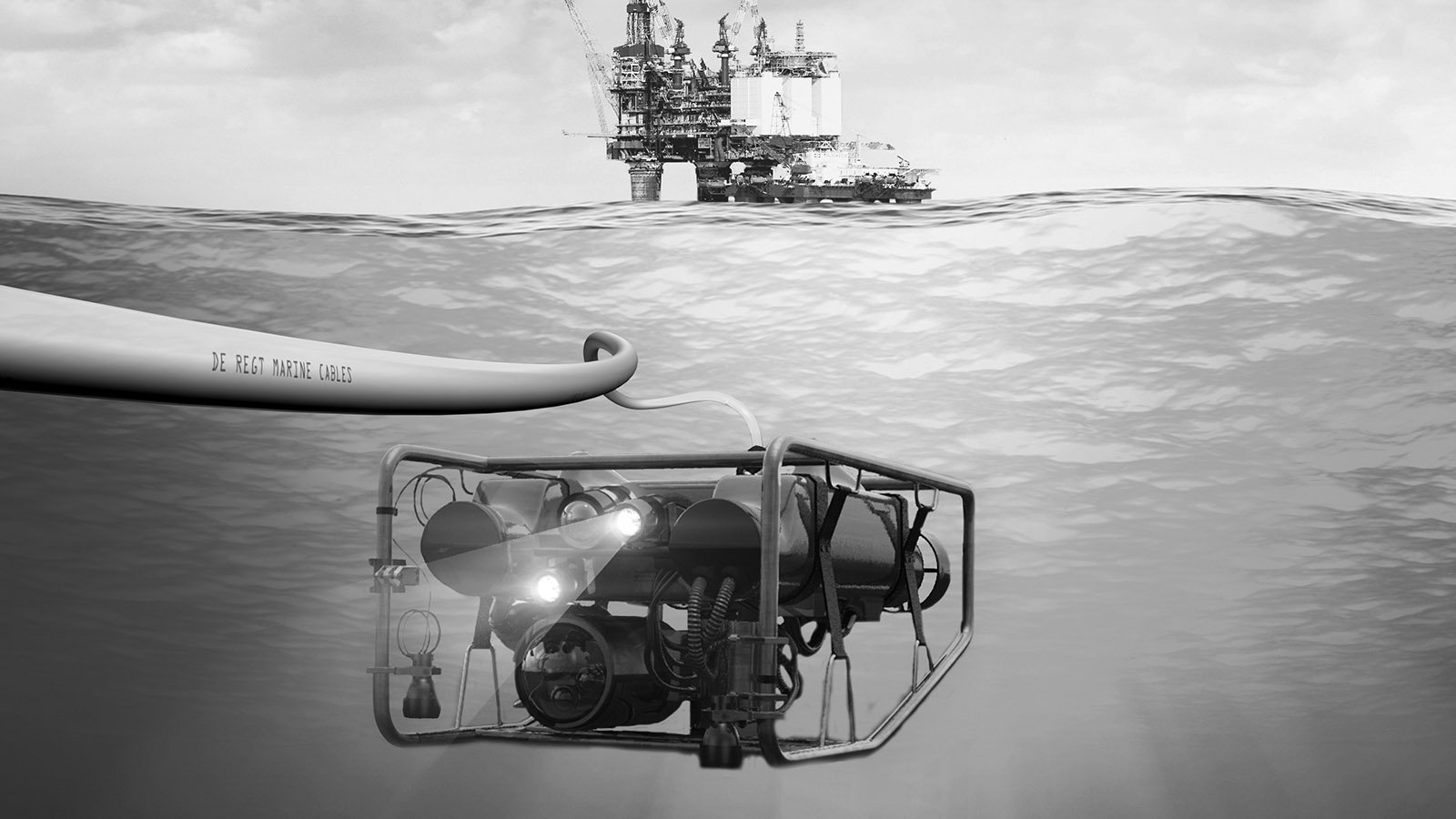The construction of an ROV umbilical cable is specialized work. The cable must be as compact as possible, but at the same time, components must be able to remain intact while applying load to the cable and while bending and flexing the cable. How should my opto-electrical cable core be constructed to survive the high loads applied while remaining flexible?
In our On-Demand Webinar on ROV Cables we discussed the various forms of Layer Constructions. When do we choose which type of cable construction? And how do we prevent problems such as torsion and defects in your ROV umbilical cable? In this blog, we will discuss the pros and cons of each Layer Construction.
Three types of Cable Construction
In one of our previous blogs, we mentioned that the number of layers and lay-up method of the cable core impact the price of your ROV umbilical to a great extent. The more lay-up operations, the more expensive your ROV cable will be. There are three types of lay-up operations, briefly summarized below:
- Unilay
All components are twisted up at the same time. Because of this, production costs are lower. Unilay also often results in the most compact construction, with the smallest possible diameter. However, there is a qualitative downside. The generated torsion for each component has to be compensated by applying back twist on the lay-up machine.
The amount of back twist is related to the helix angle. This means with different helix angles, we need additional back twisting compensation. However, with unilay all components are compensated by the same amount. This means that we will build up torsion in some of the components. This is a problem especially for long cables, and deep-sea ROV cables usually are quite long.
- Concentric Lay
With Concentric Lay, each layer of components in the core is applied separately. This means the cable core passes the machine twice, for the example shown in the figure below. Of course, this makes the ROV Cable more expensive, but all the layers have the same helix angle (and consequently the same back twist requirements) with this technique, nullifying the qualitative downsides of Unilay.
- Group Lay Construction
In the latter, Group Lay Construction, subcomponents are laid up together separately and then bundled again with other components in a second helix. This results in a very flexible construction, but it is also more expensive.
From top to bottom: Unilay, Concentric Lay & Group Lay Construction
Why Unilay is not feasible for ROV umbilical cables
Above we already mentioned the big disadvantage of Unilay: torsion can’t be compensated. For approx. every 20 turns that the component makes around the core, it must also turn once around its own axis to avoid torsion. Due to the different helix angles of components, this is impossible with Unilay. The back twist settings would have to be set differently for each process, and with Unilay there is only one process.
Another disadvantage is that each component has the same lay length and different helix angles. For example, components in the center have a small helix angle which means that when the conductors and/or fiber optics are close to the center, they will stretch the most. As a consequence, the copper or optical fibers might fail.
Because of these disadvantages, Unilay is an absolute no-go for dynamic ROV umbilical cables. While Unilay is an inexpensive, compact and fast process, the torsion introduced during the lay-up process disrupts the torque balance and the relative small helix angle of the components in the center could cause failure when loading the cable.
Concentric Lay: the golden mean for your ROV umbilical cable
In the process of Concentric Lay, the cable passes through the lay-up machine for each component layer. Because all components per layer have the same diameter, helix angle and pitch circle diameter, the cable can pass through the machine with accurate back twist settings for each layer.
We already mentioned this causes problems with Unilay, especially in the core of the cable. The helix angle in the center is smaller, putting too much strain on the most fragile components.
With Concentric Lay, the cable runs through the machine again with different back twist settings (for example, 95% in the first run and 90% in the second one). This eliminates the disadvantages of Unilay.
While group lay offers the most flexible cable construction it is also the most expensive. That’s why for ROV umbilicals a concentric construction of the opto-electrical core is often the preferred choice, combining the advantages of torsion balance, flexibility and low production costs.

Unique fit-for-purpose Cable Construction
In conclusion, the concentric lay construction is usually the best option for any ROV umbilical cable. However, every ROV project is different and every unique situation requires a unique ROV cable. That's why our ROV cable experts don't use a catalog; every ROV cable is custom-made. Your unique challenge is our starting point. What’s yours?
In our On-Demand Webinar, you'll learn all about cable construction and the various design considerations that determine how your ROV umbilical cable is constructed.
By discussing your project directly with one of our experts, you discover which ROV umbilical cable fits your specific needs best. Then, with a Custom Cable Design, you get to see what the ROV Cable will look like - completely free of charge! Request your own Custom Cable Design or contact a specialist here.



